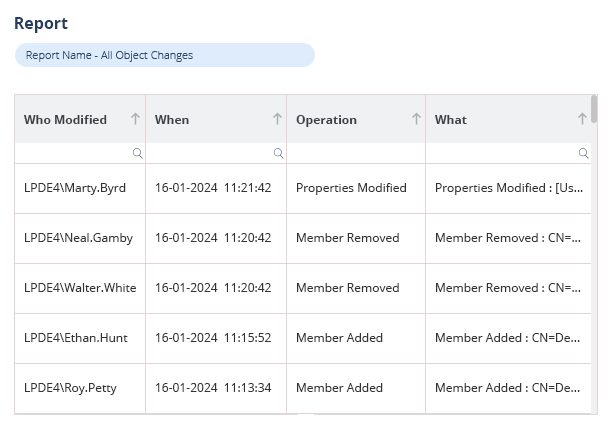Last Updated on April 25, 2025 by Deepanshu Sharma

Learning about Netlogon functions and operations gives enterprise security architects an essential perspective into their architecture while they perform authentication troubleshooting, domain security hardening, and technical skill development. This article investigates the essential role of Windows service Netlogon alongside contemporary security solutions that protect authentication functionality.
What is Netlogon?
Netlogon functions as an essential Windows service that helps domain member computers establish protected connections for communication with domain controllers. The domain member computer to domain controller traffic enabler provides secure verification services that identify users when they request access to domain resources.
Windows authentication framework implements the Netlogon service while utilizing other security components that comprise the Local Security Authority (LSA) and the Security Accounts Manager (SAM). The domain controller configuration needs Netlogon for performing additional duties that involve maintaining domain trusts, along with authentication data synchronization operations.
In modern enterprise environments, the functioning of authentication mechanisms depends strongly on Netlogon because its elimination would lead to the shutdown of these support operations. Your login credentials must pass verification to the domain storage, as Netlogon initiates the login verification at Windows domain acceptance.
The Netlogon service operates as an essential requirement for all domains because administrators lack the capability to disable authentication functionality. The critical service has run alongside Windows versions starting from the first release to enable domain membership.
What Does the Netlogon Service Do?
The Netlogon service delivers necessary operational capabilities for maintaining secure authentication operations in Windows operating systems. Netlogon’s functions deliver specific reasons that demonstrate why the service remains vital for enterprise security systems.
Secure Channel Management
Netlogon enables domain computers to communicate securely with domain controllers through the primary task of establishing and maintaining a secure channel. The protected communication channel functions as a defense mechanism for transmitting authentication data securely.
Netlogon establishes and preserves an encrypted secure channel, which refreshes encryption keys regularly and recovers the connection automatically when needed. Authentication requests always benefit from the persistent encrypted channel, thus creating protected communication pathways to prevent credential theft.
Authentication Processing
The authentication requests made by users to access domain-joined computers undergo processing by Netlogon. The service acquires login information from the local security subsystem and applies encryption before sending the data through the secure channel to the domain controller verification servers.
Netlogon executes intricate cryptographic operations that ensure secure transmission of credentials, along with domain controller authentication verification for both entities. Netlogon utilizes the NTLM and Kerberos authentication protocols while modifying this protocol selection to match security needs and system compatibility specifications.
The authentication process continues under Netlogon management after initial login, as it supports resource authentication until session termination. Netlogon handles the authentication handshake functions to determine who should obtain access to shared folders or printers based on user permissions.
Domain Controller Location
Netlogon executes the domain controller location as one of its lesser-known essential functions to find suitable domain controllers that process authentication requests. The authentication performance and reliability benefit from the DC Locator process as a feature of Netlogon.
The authentication process performed by Netlogon selects the best domain controller by considering elements such as nearby network connections and available site information, and operating controller status. The authentication request processing mechanism enables efficient command management, thus shortening logon periods and decreasing network utilization.
Netlogon promotes domain controllers through their availability advertisements, which enable clients to determine and connect to secure authentication endpoints. The advertisement distributes details regarding the controller’s features with its functional roles while specifying membership in sites.
How the Netlogon Process Works
The Netlogon process involves a complex sequence of operations that work together to provide secure and efficient authentication. Understanding this process reveals the sophisticated security mechanisms protecting enterprise identities.
The Authentication Sequence
The process of domain authentication proceeds through a specific series of logical steps for user logon attempts on domain-joined computers. After a user provides their credentials to the Windows logon interface they activate the authentication sequence. Local Security Authority (LSA) receives these credentials before making an evaluation to realize domain authentication requirements.
The Netlogon service of LSA receives the domain verification authentication request at this stage. Netlogon operates by using its DC Locator functionality to discover the correct domain controller for authentication processing. The selection process examines site memberships together with network distance to find the best controller.
The chosen domain controller requires Netlogon to determine the availability of existing secure channels. A new secure connection emerges through using the machine account authenticators of the computer. The authentication traffic between the domain controller and clients stays protected through strong cryptography implemented in this secure communication channel.
The authentication process begins after Netlogon establishes a secure channel, which allows it to send credential packages through the proper authentication protocol (Kerberos in most modern systems). Active Directory verifies the credentials sent by the domain controller through a process that results in either granting access or generating a detailed error message.
User credentials successfully decoded by domain controllers lead to information retrieval about users, which contains their group memberships and security permissions. The LSA receives user information from Netlogon, making access tokens for users using their security identifiers and privileges. The authentication token functions as a security measure that is assigned to the active session to regulate authorizations during each login interval.
Secure Channel Mechanics
Netlogon creates a multi-layered security mechanism that goes beyond standard encryption because it establishes a secure channel. The channel process starts with joint verification activities that validate the domain controller and client computer’s legitimacy before proceeding with sensitive data exchange.
All computers with machine account passwords authenticate through the process, which automatically updates the complex shared secret every thirty days by default. Credential security increases because the system periodically changes authentication credentials.security increases because the system periodically changes authentication credentials.
After mutual authentication succeeds, Netlogon creates encryption keys that secure the transmissions through the secure channel. The encryption keys defend authentication data from interception even when operating through networks that might be vulnerable. The security measure of message signing defends against unauthorized alterations of authentication traffic while it travels to its destination.
The secure channel keeps itself active by performing regular checks to verify ongoing safety. The process of channel failure triggers Netlogon to create a new cryptographic parameter-based connection. Normal changes in network conditions do not affect the self-healing mechanism of authentication systems.
Netlogon Protocols and Security
The authentication protocols incorporated by Netlogon fulfill diverse security requirements along with compatibility needs. Kerberos operates as the main authentication mechanism for contemporary Active Directory systems, yet Netlogon continues to maintain NTLM compatibility for older systems.
The service implements Kerberos authentication through standard security protocols that deploy tickets with session keys along with time-expired credentials to stop different attack methods. The implementation layer defends against standard authentication attacks like replay attacks as well as pass-the-hash techniques, along with standard authentication exploits.
The authentication process of Netlogon receives protection through multiple security functions that are integrated with its implementation. Security features defending against session timeouts and credential caching, and brute force attacks are included in this implementation. The security parameters of these systems can be adjusted by administrators through Group Policy settings according to their organizations’ particular needs.
Where is the Netlogon Folder?
The Netlogon folder represents a distinct but related component of the domain authentication infrastructure. This unique shared folder resides on domain controllers and serves several important functions related to user logon processes.
Location and Purpose
On domain controllers, the Netlogon folder is physically located within the SYSVOL structure, typically at %SystemRoot%\SYSVOL\sysvol\\SCRIPTS. This folder is automatically shared as “NETLOGON” and made available to authenticated domain users.
When users authenticate to the domain, the Netlogon folder serves as the main location for hosting logon scripts. Logon scripts carried out essential processes such as network drive mapping and system setting adjustment, and environment standardization among users. The application of scripts to a centralized replicated location ensures administrators deliver uniform user experiences to authenticated users regardless of domain controller selection.
Periodically relevant components are located in the Netlogon folder to enable logon access when users authenticate to the domain. The Netlogon folder stores files that can encompass configuration files, along with certificates, as well as small utility programs. This workspace serves organizations for distributing customized resources that users need to access within the first seconds after authentication completes.
All domain controllers obtain Netlogon folder contents through the File Replication Service (FRS) in legacy domains as well as the Distributed File System Replication (DFSR) in contemporary domains. The domain environment maintains continuous access to logon resources through the method of automatic and consistent replication.
How Lepide Helps
Lepide’s Active Directory auditing capabilities provide complete protection for essential authentication services, including Netlogon. The tool enables live tracking of Netlogon functions to detect authentication problems and failed secure channel connections while alerting users about security breaches that may harm domain services. Through specialized Active Directory auditing, Lepide monitors authentication patterns, identifies suspicious access attempts, and alerts administrators to Netlogon-related vulnerabilities.
Looking to simplify your Active Directory auditing? Start your free trial of Lepide today.


 Group Policy Examples and Settings for Effective Administration
Group Policy Examples and Settings for Effective Administration 15 Most Common Types of Cyber Attack and How to Prevent Them
15 Most Common Types of Cyber Attack and How to Prevent Them Why AD Account Keeps Getting Locked Out Frequently and How to Resolve It
Why AD Account Keeps Getting Locked Out Frequently and How to Resolve It
